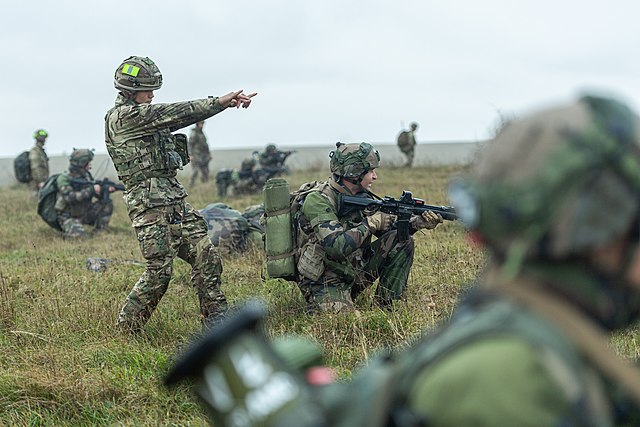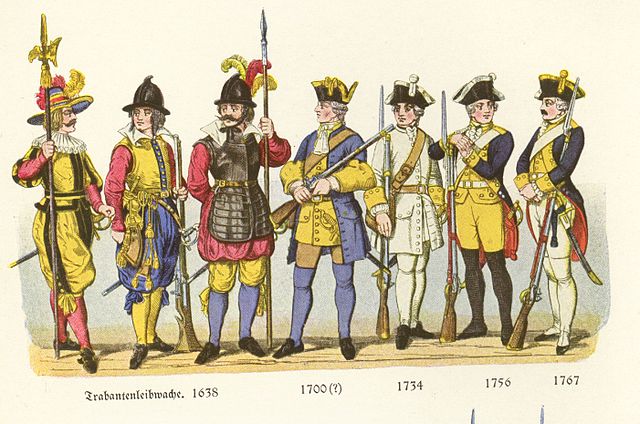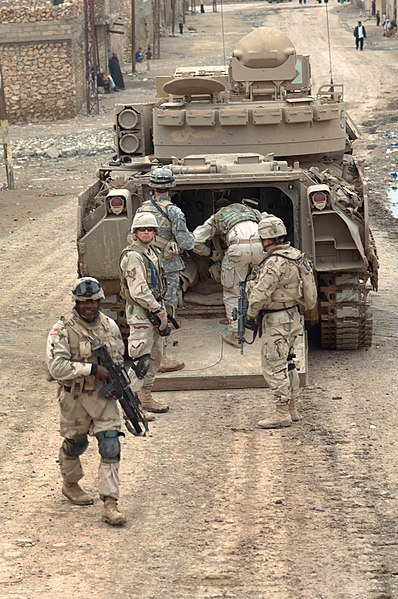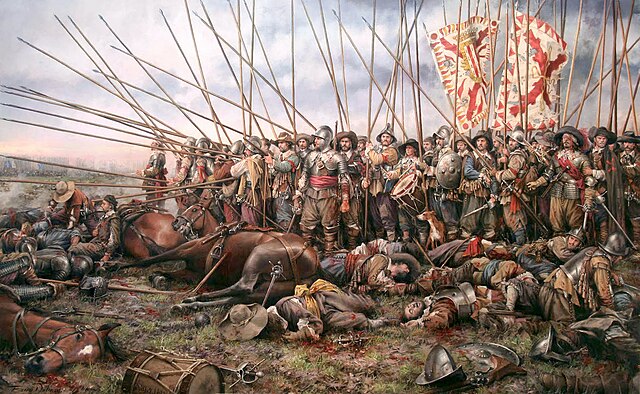Line infantry was the type of infantry that formed the bulk of most European land armies from the mid-17th century to the mid-19th century. Maurice of Nassau and Gustavus Adolphus are generally regarded as its pioneers, while Turenne and Montecuccoli are closely associated with the post-1648 development of linear infantry tactics. For both battle and parade drill, it consisted of two to four ranks of foot soldiers drawn up side by side in rigid alignment, and thereby maximizing the effect of their firepower. By extension, the term came to be applied to the regular regiments "of the line" as opposed to light infantry, skirmishers, militia, support personnel, plus some other special categories of infantry not focused on heavy front line combat.
Prussian line infantry attack at the 1745 Battle of Hohenfriedberg.
Infantry is a specialization of military personnel who engage in warfare combat. Infantry generally consists of light infantry, irregular infantry, heavy infantry, mountain infantry, motorized infantry, mechanized infantry, airborne infantry, air assault infantry, and naval infantry. Other types of infantry, such as line infantry and mounted infantry, were once commonplace but fell out of favor in the 1800s with the invention of more accurate and powerful weapons.
French Army and British Army infantry during a military exercise in 2020
Various infantry of the 17th through 18th century (halberdier, arquebusier, pikeman, and mix of musketeers and grenadiers) of Duchy of Württemberg
Infantry of the 3rd Armored Cavalry Regiment of the United States Army boarding an M2 Bradley IFV in Iraq in 2006
Rocroi, el último tercio ("Roicroi, the last tercio") by Augusto Ferrer-Dalmau, portraying infantry of a battered Spanish tercio at the 1643 Battle of Rocroi





